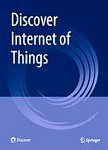版权所有:内蒙古大学图书馆 技术提供:维普资讯• 智图
内蒙古自治区呼和浩特市赛罕区大学西街235号 邮编: 010021

作者机构:Institut fur Datentechnik und Kommunikationsnetze Tchnische Universitat Carolo-Wilhelmina zu Hans-Sommer-Strasse 66 Braunschweig38106 Germany Lane Department of Computer Science and Electrical Engineering West Virginia University Morgantown26506 United States Department of IT-Convergence Engineering Kumoh National Institute of Technology Gumi39177 Korea Republic of
出 版 物:《Discover Internet of Things》 (Discov. Internet Things)
年 卷 期:2025年第5卷第1期
页 面:1-23页
核心收录:
基 金:This work was partly supported by Innovative Human Resource Development for Local Intellectualization program through the IITP grant funded by the Korea government(MSIT) (IITP-2025-RS-2020-II201612 33%) and by Priority Research Centers Program through the NRF funded by the MEST(2018R1A6A1A03024003 33%) and by the MSIT Korea under the ITRC support program(IITP-2025-RS-2024-00438430 34%)
摘 要:Deep learning-based intrusion detection systems (DL-IDS) have proven effective in detecting cyber threats. However, their vulnerability to adversarial attacks and environmental noise, particularly in industrial settings, limits practical application. Current IDS models often assume ideal conditions, overlooking noise and adversarial manipulations, leading to degraded performance when deployed in real-world environments. Additionally, the black-box nature of DL model complicates decision-making, especially in industrial control systems (ICS) network, where understanding model behavior is crucial. This paper introduces the eXplainable Cyber-Threat Detection Framework (XC-TDF), a novel solution designed to overcome these challenges. XC-TDF enhances robustness against noise and adversarial attacks using regularization and adversarial training respectively, and also improves transparency through an eXplainable Artificial Intelligence (XAI) module. Simulation results demonstrate its effectiveness, showing resilience to perturbation by achieving commendable accuracy of 100% and 99.4% on the Wustl-IIoT2021 and Edge-IIoT datasets, respectively. © The Author(s) 2025.